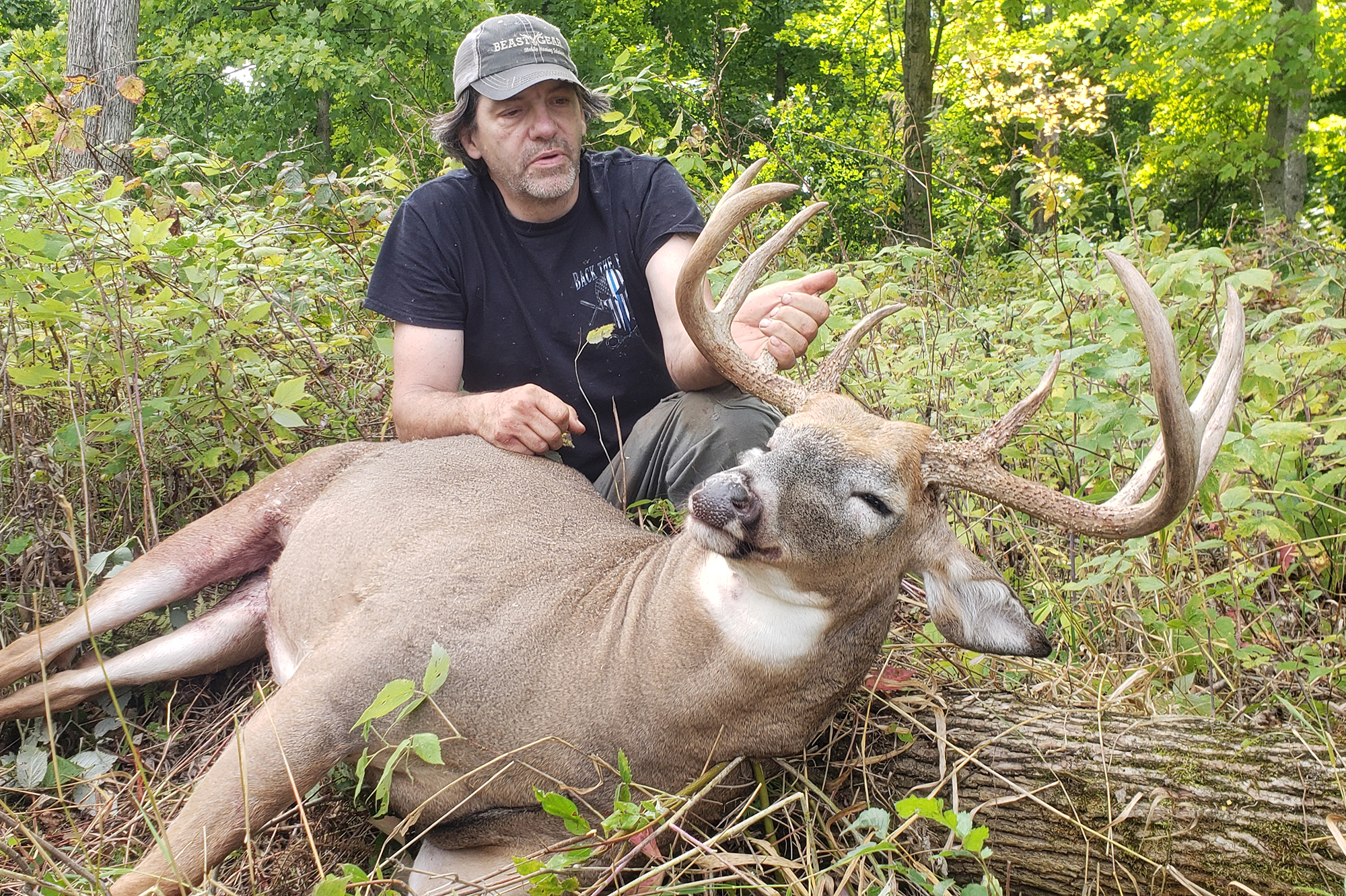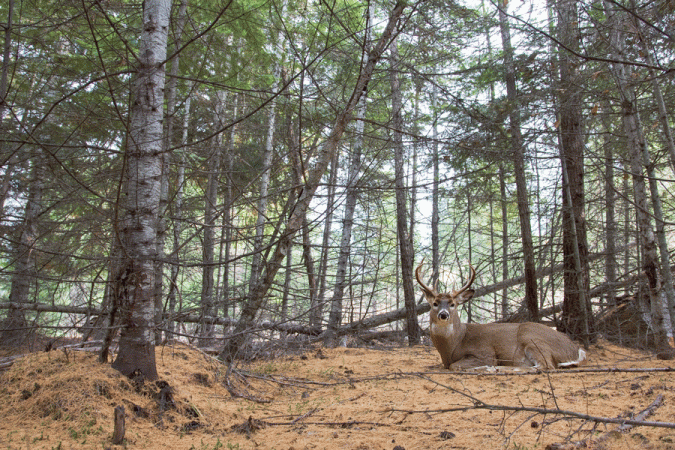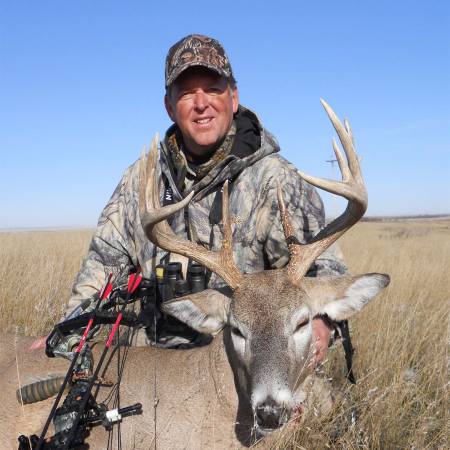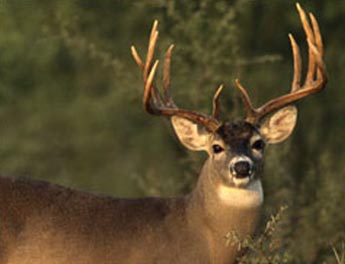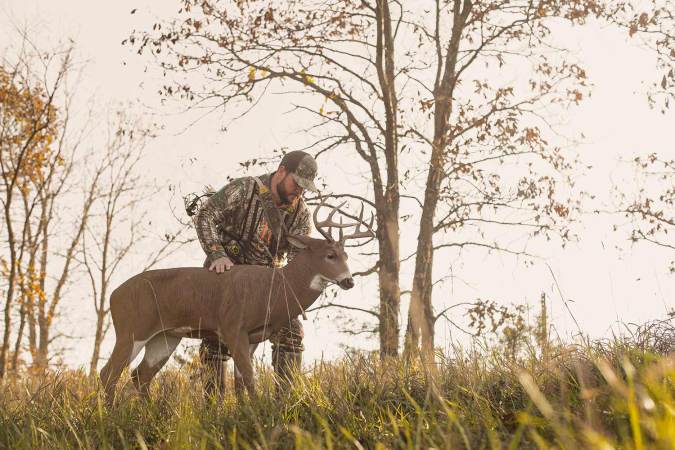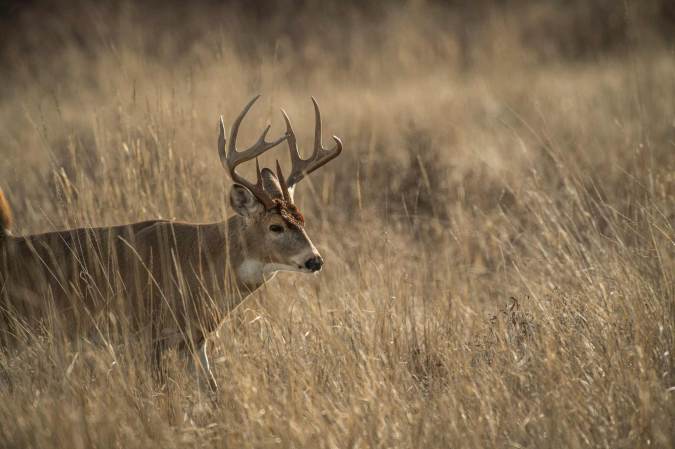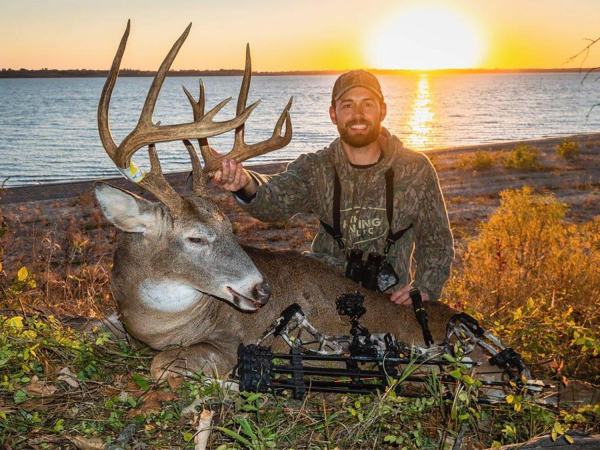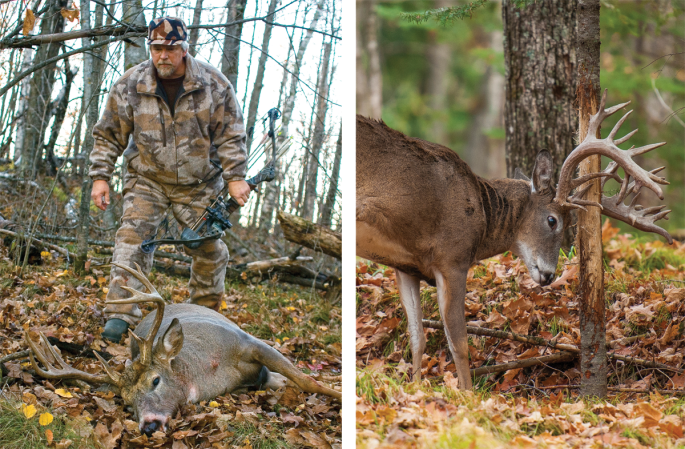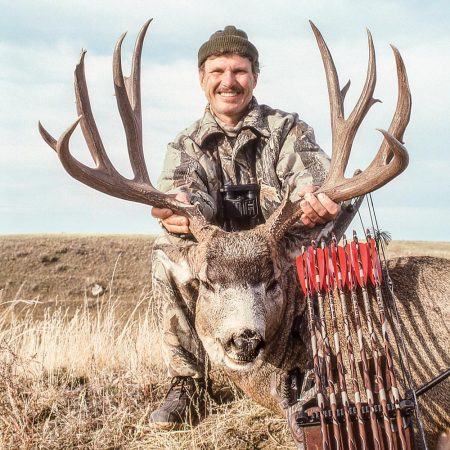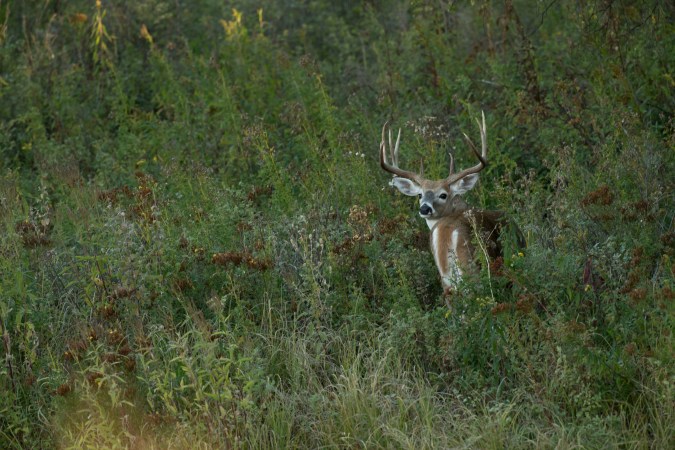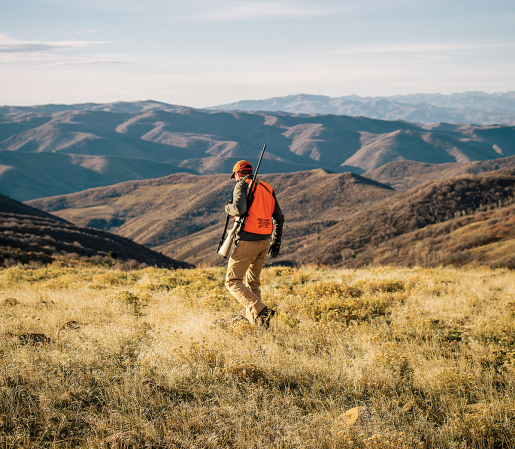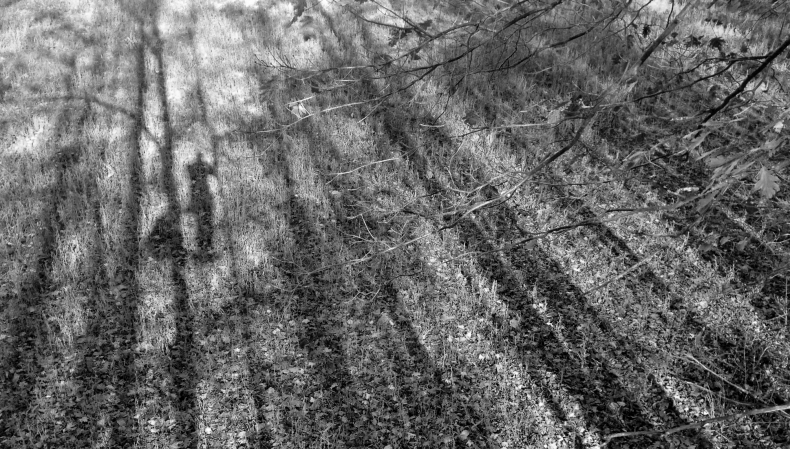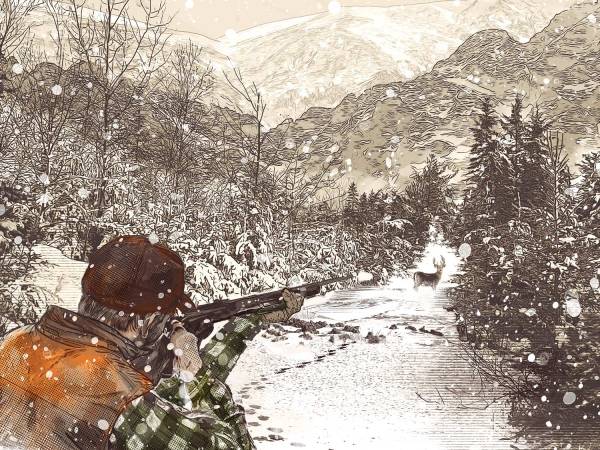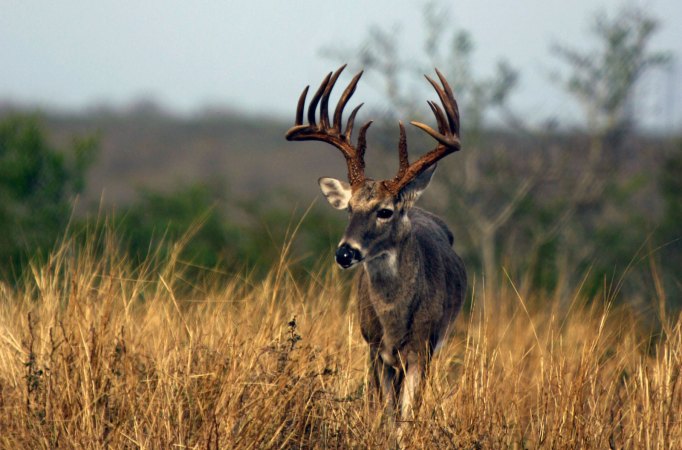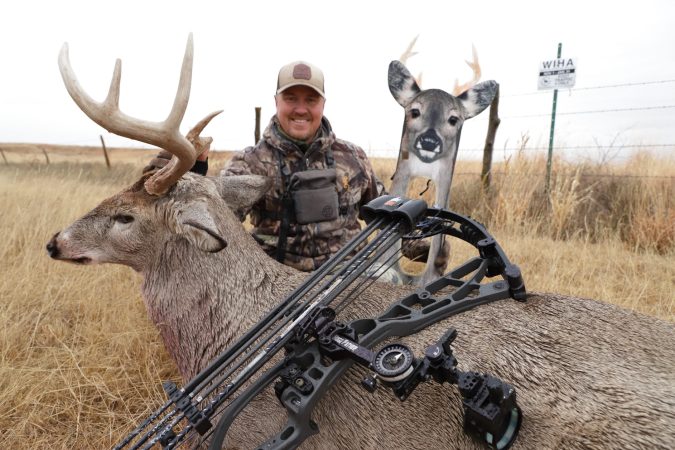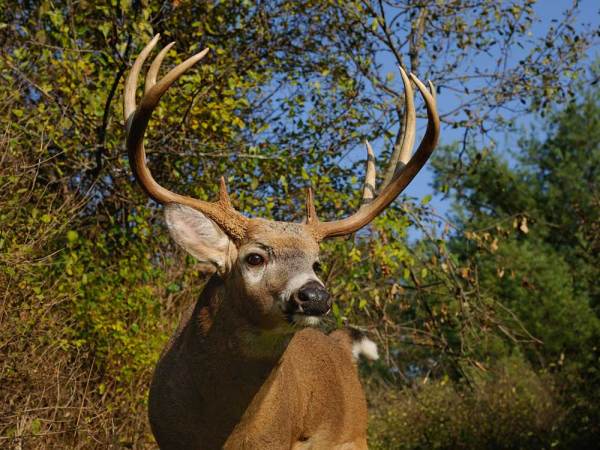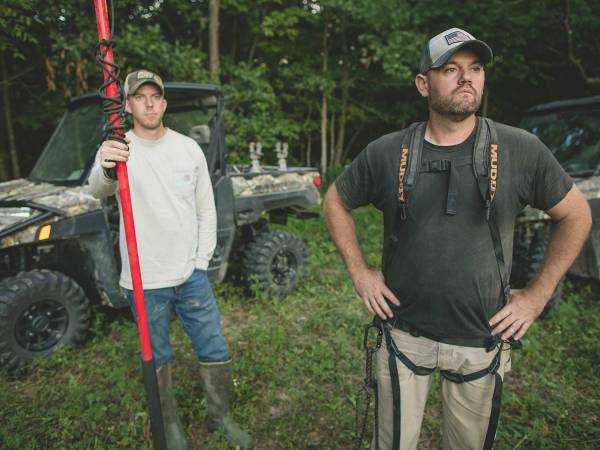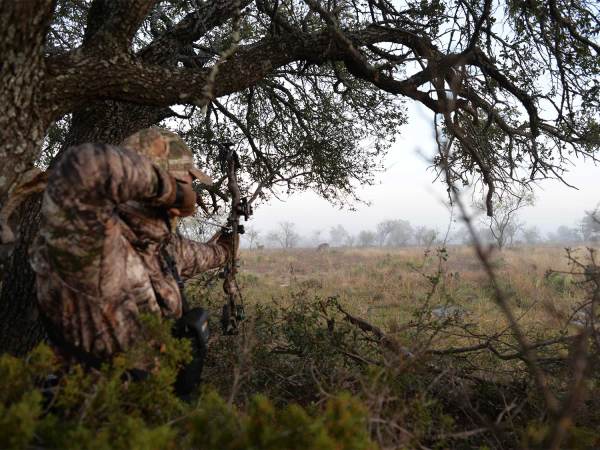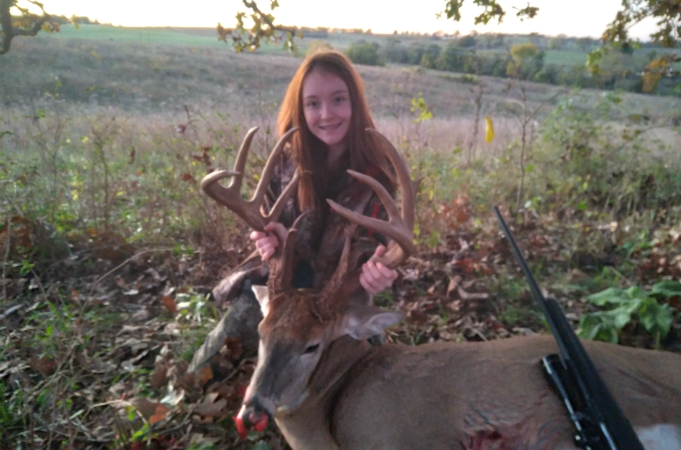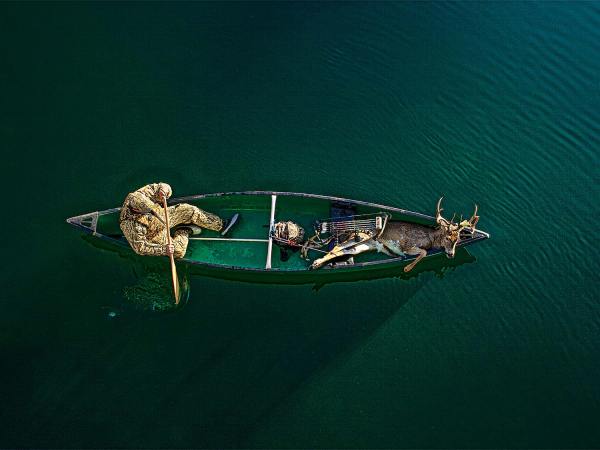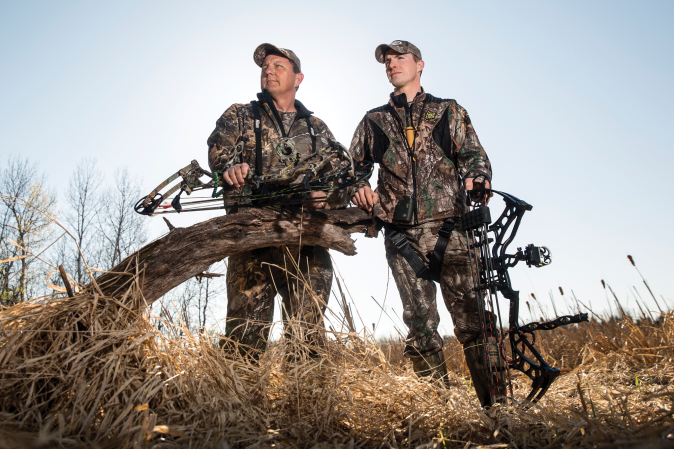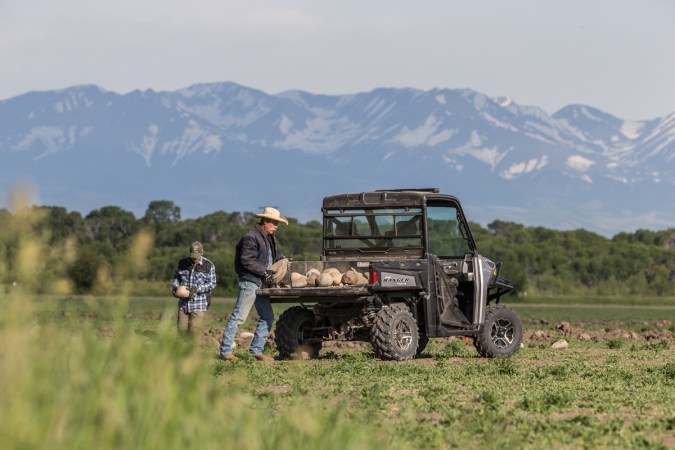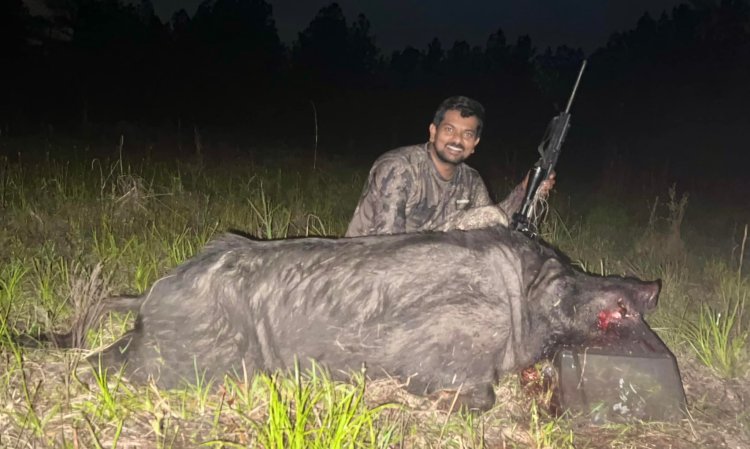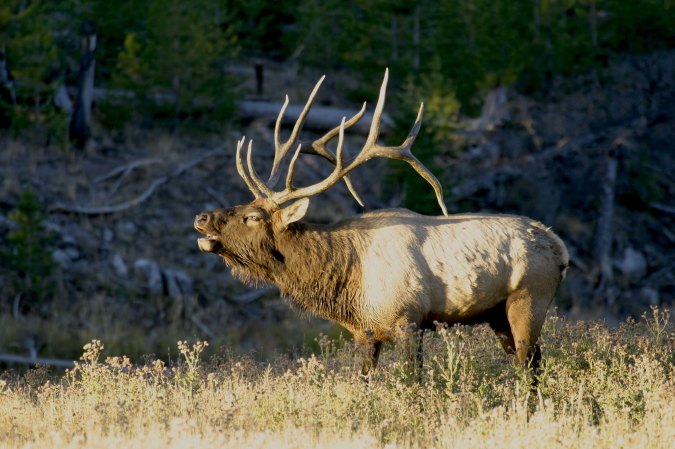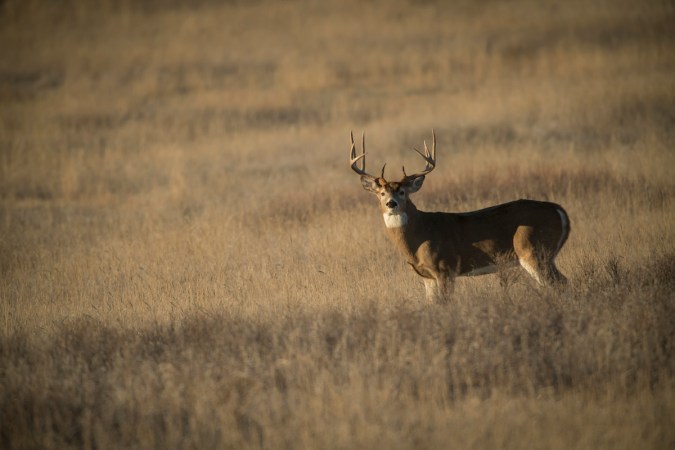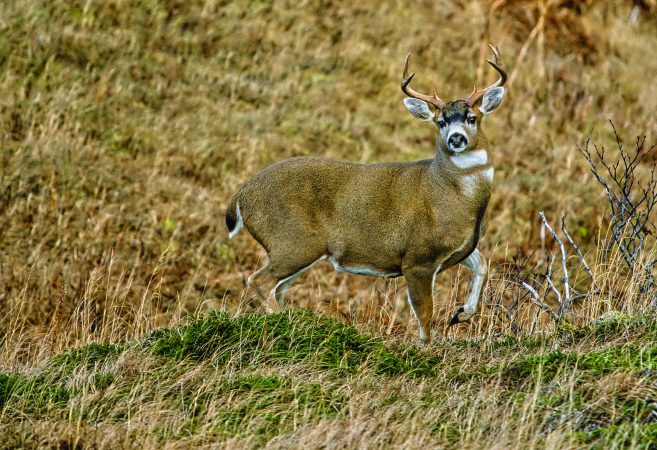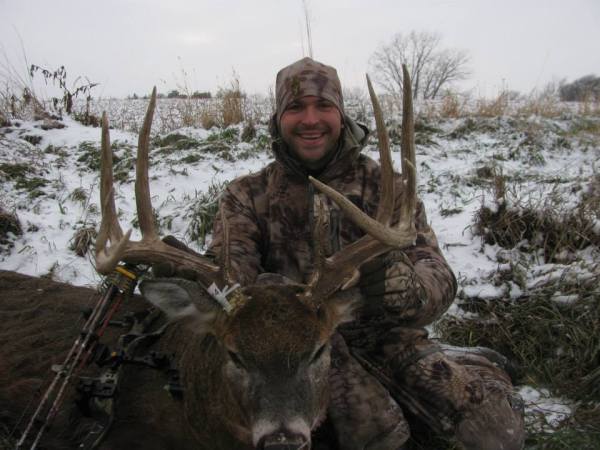Infalt targets swamps and marshes that many other hunters simply overlook. He analyzes what works, and scraps what doesn’t. Over the years, Infalt has fine-tuned his approach into a reliable strategy. Whether you hunt private land or public ground, you can learn from how Infalt works in close to bedded bucks—and kills them.
Learning the Basics
If you ask Dan Infalt who taught him to hunt, he’ll tell you he learned more from observing deer than he did any human hunter.
“I remember being passionate about hunting my entire life—as long as I can remember,” Infalt says. “My dad didn’t hunt by the time I came around. I had some brothers who hunted. But by the time I was old enough to hunt, they had gone off to Vietnam. I grew up hunting on my own. I learned from the animals.”
Infalt and other experts will say that mature whitetails are completely different animals than younger deer. To consistently harvest these older whitetails, it takes a different approach and mindset. So it makes sense that Infalt is geared differently than most modern hunters. He doesn’t sit back and wait for deer to come to him. Rather, he goes to the deer. His method involves knowing exactly where buck beds are located, then getting as close to them as possible.
“I do most of my scouting in the winter,” Infalt says. “As soon as I’m done hunting, I go in and look at the beds. I really pick them apart. I try to determine the timeframe that buck is there. I find it’s like a two-week period in most bedding areas. If you don’t hit that timing correctly, you generally don’t get the deer.”
There are numerous factors that influence when specific beds are used. According to Infalt, it might be that he’s bedding there based on available cover, food sources, a local doe group, or other factors like avoiding hunting pressure. Still, the common denominator is transitional cover, also known as edge habitat.
“In marshes and swamps, I’m looking for islands and points in remote areas,” Infalt says. “I also focus on places really close to the road. I go anywhere other people don’t go. People leave behind scent that can last 10 to 15 days, perhaps longer than that. A deer can detect they were there. Anywhere people go, deer are going to be leery moving during daylight. So, they’ll find the spots where people don’t go.”
To find these areas quickly, Infalt looks at a map and crosses off anywhere hunters will obviously go. Then, Infalt hunts the remaining 10 percent that also offers quality edge cover.
Getting Ultra Close
Finding deer is difficult. Getting close to bedded deer without alerting them is even harder. Knowing how close you can get without bumping deer is the fine line.
“It differs with the habitat,” Infalt says. “I love the swamps around my home. In the swamps, I can get close. I think I average about 75 to 100 yards from their beds.”
Deer often have more visibility in more mature habitat, which means you should hunt farther from their bedding area.
“When I get up into the hill country, where it tends to be more forest, I get about 200 yards back,” Infalt says.
Moving slowly is important and will help keep you off a buck’s radar. Still, with the right conditions, getting close to beds without bumping deer becomes much easier. Rain, wind, and wet ground help a hunter move stealthily.
“When you’re on wet ground, the leaves don’t crunch, and you can go faster quieter,” Infalt says. “But under normal circumstances, I’m going very slowly for the last 100 yards. It’s to the point where I literally stop and let my system slow down before moving forward, or I tend to catch myself moving too fast. Because all it takes is one broken branch for that deer to catch you.”
Targeting Bucks Through the Season
The phases of deer season influence where you’ll target bucks. Of course, it starts with the early season. The rut is a great time to kill a buck, but the early season is the best time to kill a specific buck.
“I’ve had my greatest success with mature bucks the first couple weeks of the early season,” Infalt says. “Not during the rut. I see more deer during the rut, including 2 ½- and 3 ½-year-old bucks people are happy to shoot. But most of the biggest mature bucks I’ve killed have come from the early season.”
“I think one of the things that gets me onto bucks the quickest—and it isn’t 100 percent—is food. This year, there’s a good acorn crop. In a lot of cases, they’re bedding near acorns. That can kill you in the hills and forests where oaks are everywhere. But in the swamps and marshes, oaks are isolated on the islands. I look for the beds surrounding those.”
Transitioning into the pre-rut, deer really settle into their fall range. When that occurs, bucks ease into newly established patterns. That’s Infalt’s favorite time to hunt.
“I do my best during the rut right before it begins,” he says. “Like the third or fourth week of October. They’re still on a pattern, rather than being random. And they lay down a lot of sign. A guy can scout with a stand on his back in late October, find a fresh rub line coming out of bedding, and follow it back and cut them off.”
It’s important to know when to stop pushing toward a bed, though. This isn’t an easy skill to learn. Infalt says it takes looking at a lot of beds, and some trial and error in the field, to fully develop this ability.
“It’s a hard thing to describe to someone,” he says. “It’s usually right along an edge, and you can see a pocket they’re going to bed in. They aren’t going to be in open cattails, open tag alders, or just anywhere. They’re going to be right on the edge in the perfect spot to bust you if you come in there.”
So, don’t get too deep or close to beds, but don’t set up too far away, either. If you’re occasionally kicking up deer, but not regularly, you’re gauging it about right. If you never spook a deer, you’re probably setting up too far away. Sneaking close ensures that if the buck does leave his bed during legal light, you’ll get a shot at him.
“It’s very rare that I see my target buck and don’t get a shot at him,” Infalt says. “I’m pushing that envelope to right on top of him. If he comes out, I get my shot.”
Once the rut arrives, deer drop their guard, but mature bucks don’t do so nearly as much as most hunters think.
“A lot of the deer chasing are younger deer,” Infalt says. “Mature deer that are six or seven years old rarely run around all day long chasing does through funnels. They’d never get that old [if they did]. It’s the rare mistake when they do that. They might only do so once or twice each year. If you’re lucky enough to be there when that happens, then great. But I don’t think they move very well during the rut.”
Generally when Infalt sees mature bucks during daylight, it’s in bedding cover or adjacent to doe bedding areas. This makes them harder to kill. Even during the rut, Infalt shoots most of his mature bucks in the thick stuff near where deer sleep.
“I will hunt doe bedding areas that harbor bucks, or adjacent bedding areas near there,” he says. “But I still kill most of my bucks in bedding, not in funnels.”
Once the late season arrives, it’s all about the food. During this time of year, deer will be in bigger groups. With the right access, Infalt believes this is the easiest time to find a mature buck. With the right weather, killing on is possible, but it’s not easy.
“They move well during daylight, especially if you wait until it’s cold,” he says. “When it gets bitter cold, I get that good late-season movement.”
Timing the Strike
Dan hunts some private ground with pre-set stands. But he’s tagged most of his best bucks with a mobile hunting approach.
“Of the top 15 [bucks I’ve killed], 11 or 12 of them were the very first time I sat a spot,” he says. “A couple of the others were the first time I sat it for the year. That’s not by coincidence.”
He will hunt the same spots over and over on occasion. But he says the results speak for themselves.
“One thing I see with private land guys is that, a lot of the time, they’ll place stands in the best funnels and traditional spots, such as food plots,” Infalt says. “They’ll rotate through those stands, and the bucks learn where they are. You’ll get on a mature buck’s tracks and watch him go through the whole woods without going past one of those stands. It takes a mobile move to get them.”
Essentially, hunters must catch bucks by surprise. That’s likely the most important factor in shooting mature deer. And keep moving. If a buck learns you’re there, keep hunting fresh spots until he slips up.
Getting Busted
Use Infalt’s tactics with any sort of frequency, and you’re going to bust a buck from its bed. Some hunters do this intentionally, which is commonly referred to as the “bump and dump.” Others do it by accident.
“If I bump a shooter buck, I will hunt that spot the next day,” Infalt says. “Most of the time, I won’t get another crack at him in that spot. But, one out of seven times, he does come back. Those are still pretty good odds. So, I do throw another hunt at him. I want to keep that deer honest. Because if I don’t hunt that spot again, I won’t know if he came back.”
Sometimes, he’ll even hunt it the same day that he spooked the buck from its bed. Thinking you moved on, bucks circle back into their bedding areas. However, it’s important to hunt on the downwind side. Generally, these bucks circle back around to scent check for danger. Set up incorrectly and they’ll pick you off.
Of course, there are different kinds of bumps. A soft bump is where a deer looks around but doesn’t get spooked badly. It doesn’t know what you are, but it walks or trots off. A hard bump is entirely different: a deer snorts and bounds away in a panic. The buck blows out of there and often doesn’t come back. At least, not the same day.
Once you’ve run a deer out for good, start moving from bedding area to bedding area. If a buck goes back to these, they’ll smell your scent, and likely avoid it, moving on to the next one. Infalt calls that method “stacking.”
Maximizing the Odds
The average deer hunter might get discouraged when using his bed-hunting tactic because it takes years to master.
“Most guys struggle for the first two years,” Infalt says. “It seems easy. They go out and scout. They find the big buck’s bed and think they have it made. I have one of those perfect scenarios just about every time I go out hunting. I know where that buck’s bed is. I set up on it, and probably 30 percent of the time, a target buck doesn’t come out of there. Maybe more than that. Usually something comes out of those beds, but it ain’t always the buck I’m after. But doing this repeatedly, eventually you score. Some scenarios have higher success than others.”
Heavy pressure and higher predator populations can lead to increased difficulty. In these instances, consider getting creative. Locate beds that utilize the safety of water.
“Deer really use water as a buffer,” Infalt says. “They bed in thick areas that are wet. They love high spots surrounded by water.”
Islands, oxbows, peninsulas, and coves are good examples of this. Other overlooked areas are good, too.
“Beside the road has been good for me,” Infalt says. “Nobody goes into a parking lot and walks along the road for a mile. They go out a little ways or a long ways, but no one hunts beside the road. I’ve taken some of my biggest bucks along roadsides.”
Regardless of where or how you hunt, learning when to get aggressive and when to be passive is key.
“You must know when to be aggressive, and when to hold back,” he says. “On the outside, I seem to be very aggressive with how I hunt. But I’m only aggressive on kill day. Otherwise, I’m sitting back glassing. I’m not going in there to make sure he’s in there. I’m staying out and back until it’s time to kill.”
Infalt’s Gear
Using hunting gear that’s tuned for this type of mobile hunting is important. Hunting with pre-set stands can work but being mobile increases the odds for numerous reasons. Infalt hunts public 80% of the time. But even on private, he prefers the mobile approach.
“Lightweight mobile gear,” Infalt says. “It’s designed for exactly how I hunt. It’s what I do for a living. I build products and inventions for engineering teams. I’m very familiar with mechanical apparatuses. So, I built what I thought was the perfect treestand and sticks in a combination that goes together. I wear them on my back.”
Interested hunters can find his treestand and sticks at Huntingbeastgear.com.
